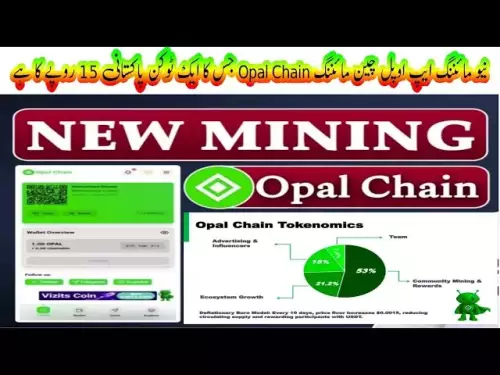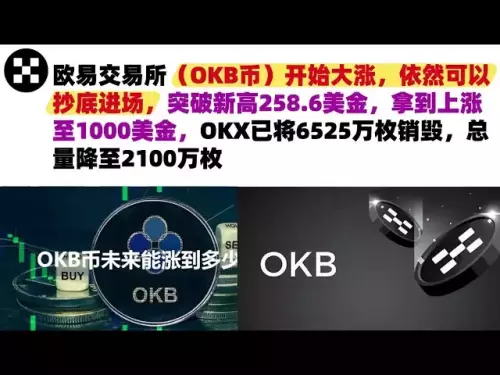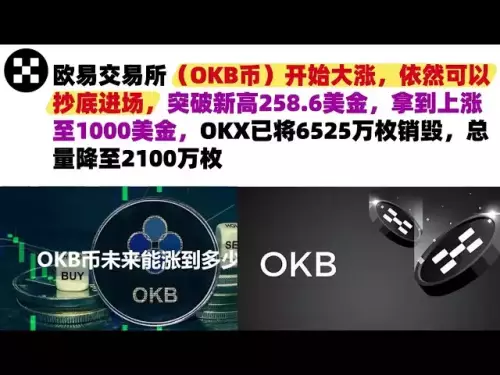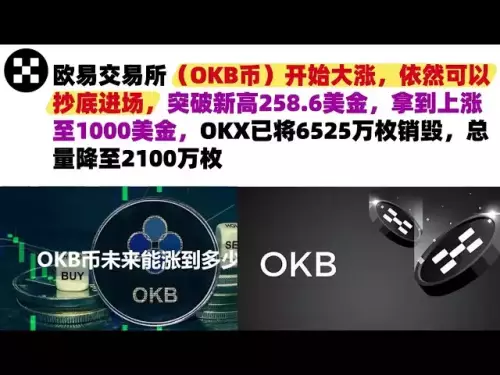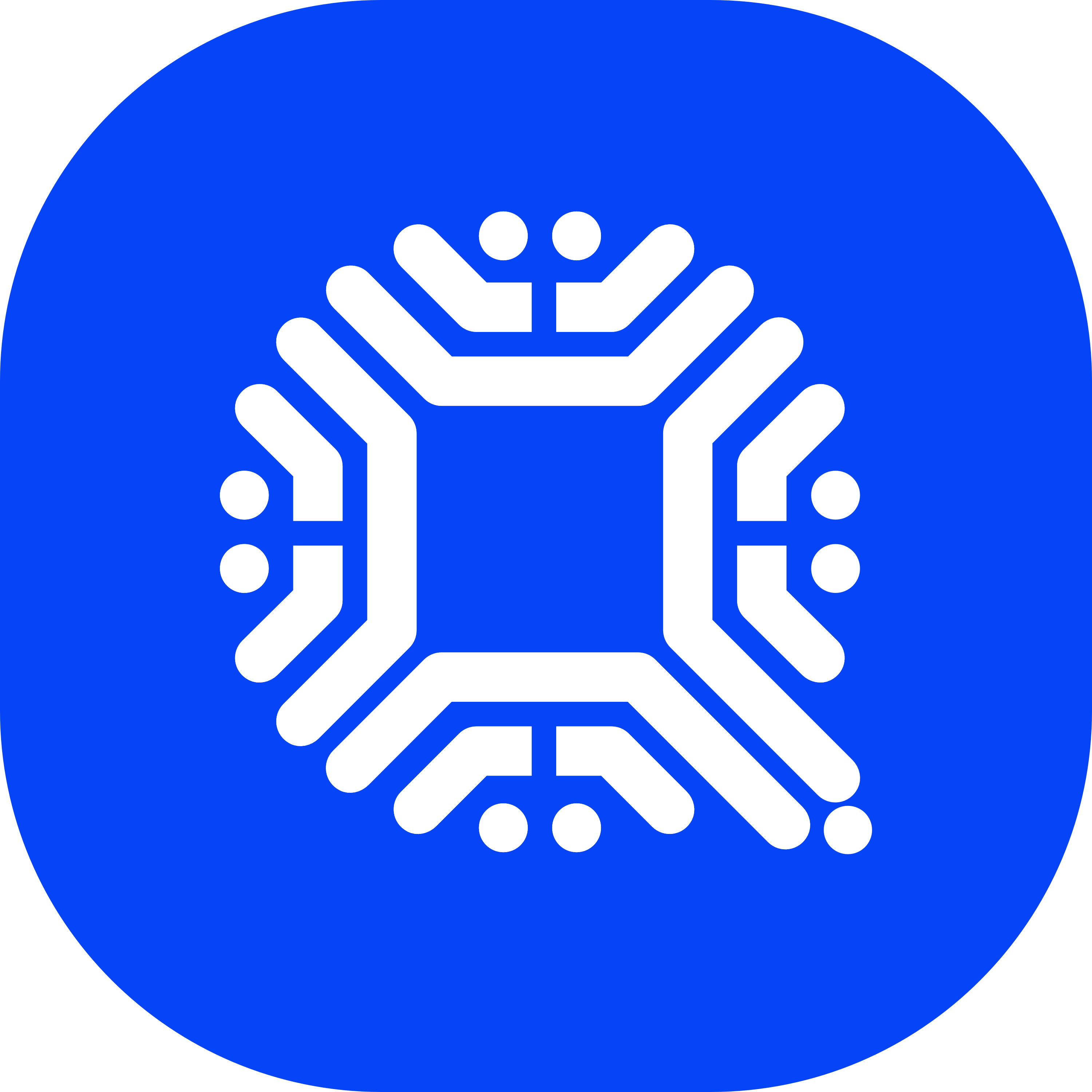-
 Bitcoin
Bitcoin $108600
-0.96% -
 Ethereum
Ethereum $4399
1.23% -
 XRP
XRP $2.819
-1.49% -
 Tether USDt
Tether USDt $1.000
0.01% -
 BNB
BNB $860.0
0.56% -
 Solana
Solana $203.8
-1.78% -
 USDC
USDC $0.9999
0.01% -
 Dogecoin
Dogecoin $0.2166
1.51% -
 TRON
TRON $0.3400
-0.02% -
 Cardano
Cardano $0.8363
1.59% -
 Chainlink
Chainlink $23.32
-0.36% -
 Hyperliquid
Hyperliquid $43.79
-1.06% -
 Ethena USDe
Ethena USDe $1.001
0.01% -
 Sui
Sui $3.337
0.19% -
 Stellar
Stellar $0.3596
-1.23% -
 Cronos
Cronos $0.3182
8.11% -
 Bitcoin Cash
Bitcoin Cash $531.7
-0.26% -
 Avalanche
Avalanche $23.70
-0.37% -
 Hedera
Hedera $0.2266
-1.12% -
 UNUS SED LEO
UNUS SED LEO $9.491
-1.02% -
 Litecoin
Litecoin $111.0
1.27% -
 Toncoin
Toncoin $3.098
0.85% -
 Shiba Inu
Shiba Inu $0.00001241
2.08% -
 Uniswap
Uniswap $9.759
2.05% -
 Polkadot
Polkadot $3.799
0.34% -
 Dai
Dai $0.9999
0.01% -
 Bitget Token
Bitget Token $4.548
0.33% -
 Monero
Monero $266.3
0.78% -
 Aave
Aave $316.3
3.39% -
 Ethena
Ethena $0.6697
3.25%
How to use MetaMask for decentralized finance (DeFi)?
Set up MetaMask securely, connect to DeFi apps like Uniswap, manage gas fees, and protect your assets by revoking unused token approvals.
Aug 30, 2025 at 08:21 am

Getting Started with MetaMask in DeFi
1. Install the MetaMask browser extension or download the mobile app from official sources. Ensure you are accessing the correct website to avoid phishing scams.
- Create a new wallet and securely store your 12-word recovery phrase in a physical, offline location. Never share this phrase with anyone.
- Choose the Ethereum Mainnet initially, as most DeFi platforms operate on Ethereum. You can add other networks like Binance Smart Chain later.
- Fund your wallet with ETH or other supported tokens through centralized exchanges or peer-to-peer transactions. This is necessary to pay gas fees.
- Visit popular DeFi platforms such as Uniswap, Aave, or Compound and connect your MetaMask wallet when prompted.
Connecting MetaMask to DeFi Protocols
1. Navigate to a DeFi application’s official website. Double-check the URL to avoid fake sites mimicking legitimate platforms.
- Click on the “Connect Wallet” button, usually located in the top-right corner of the interface.
- Select MetaMask from the available options. Your wallet will prompt you to confirm the connection.
- Approve the connection request within MetaMask. Note that this does not grant access to your funds—only interaction permissions.
- Once connected, your wallet address will be visible on the DeFi platform, allowing you to interact with smart contracts.
Executing Transactions in DeFi Using MetaMask
1. When swapping tokens on a decentralized exchange, input the amount and confirm the transaction details like slippage tolerance.
- MetaMask will open a pop-up showing the gas fee, network, and total amount to be sent. Review all details carefully.
- Adjust the gas fee if necessary by selecting “Edit Gas Fee” to prioritize speed or cost-efficiency based on network congestion.
- Confirm the transaction in MetaMask. The wallet will broadcast it to the blockchain network for validation.
- Monitor the transaction status in the Activity tab of MetaMask. Completion time depends on network load and the gas price set.
Managing Assets and Security in MetaMask
1. Use the “Assets” tab to view your token balances. Add custom tokens manually if they don’t appear automatically.
- Enable advanced security settings like password protection for transactions and biometric authentication on mobile.
- Regularly check for MetaMask updates to benefit from the latest security patches and feature improvements.
- Avoid connecting your wallet to unknown or untrusted dApps. Malicious sites can trigger unauthorized token approvals.
- Revoke unnecessary token approvals through tools like revoke.cash to minimize exposure to potential exploits.
Frequently Asked Questions
How do I add a new blockchain network to MetaMask?Manually add networks by entering details such as the RPC URL, chain ID, and currency symbol under Settings > Networks > Add Network. Ensure accuracy to prevent loss of access.
What should I do if a transaction is stuck?Use the “Speed Up” option in MetaMask to increase the gas fee and incentivize miners. If the transaction is pending too long, consider canceling it with a higher gas replacement.
Can I use MetaMask with hardware wallets?Yes, MetaMask supports integration with Ledger and Trezor devices. Connect the hardware wallet through the “Connect Hardware Wallet” option for enhanced security.
Why am I being charged high gas fees?Gas fees fluctuate based on Ethereum network demand. High usage periods, such as during NFT mints or major DeFi launches, drive fees up. Schedule non-urgent transactions during low-traffic hours.
Disclaimer:info@kdj.com
The information provided is not trading advice. kdj.com does not assume any responsibility for any investments made based on the information provided in this article. Cryptocurrencies are highly volatile and it is highly recommended that you invest with caution after thorough research!
If you believe that the content used on this website infringes your copyright, please contact us immediately (info@kdj.com) and we will delete it promptly.
- DeFi's Golden Age: How Polygon's USDT/XAU Integration Ushers in a New Era
- 2025-08-30 17:05:12
- Plasma, EtherFi, and Stablecoin Yields: A New Era of DeFi?
- 2025-08-30 16:45:21
- Remittix (RTX): The Real-World Utility Kingpin and Its Market Positioning in 2025
- 2025-08-30 17:25:15
- Succinct, Institutional Liquidity, and Strategic Investment: Decoding the Future of Blockchain
- 2025-08-30 16:45:21
- Dogecoin, BONK, and the Price Dip Tango: What's Shakin'?
- 2025-08-30 17:30:12
- XRP, Institutional Adoption, and Treasury Yield: A New Era?
- 2025-08-30 17:30:12
Related knowledge

How to use Trust Wallet's built-in DEX?
Aug 29,2025 at 07:28am
Understanding Trust Wallet’s Built-in DEX1. Trust Wallet integrates a decentralized exchange (DEX) directly within its mobile application, allowing us...
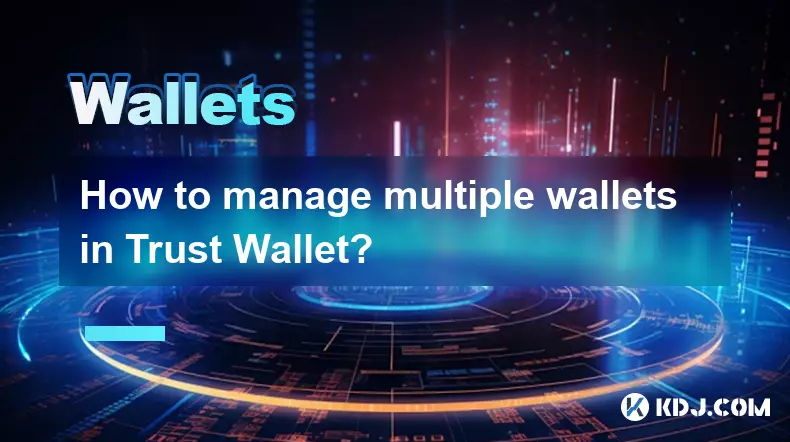
How to manage multiple wallets in Trust Wallet?
Aug 30,2025 at 04:45am
Understanding Wallet Management in Trust Wallet1. Trust Wallet supports a wide range of cryptocurrencies and tokens, allowing users to manage multiple...
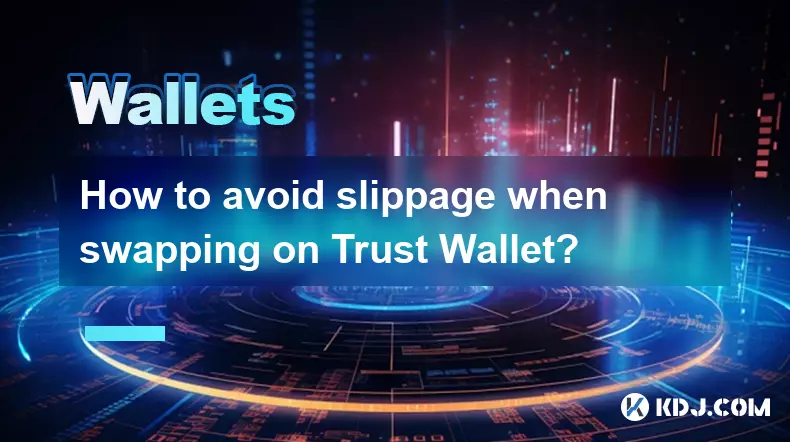
How to avoid slippage when swapping on Trust Wallet?
Aug 29,2025 at 03:01am
Understanding Slippage in Decentralized Exchanges1. Slippage occurs when the price of a cryptocurrency changes between the time a transaction is initi...
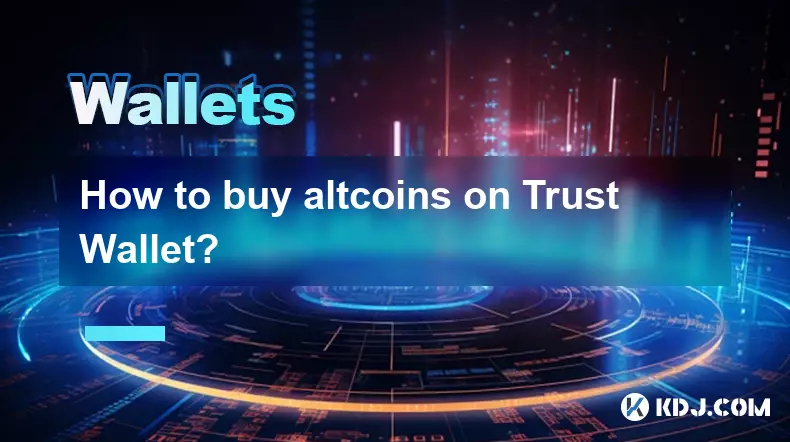
How to buy altcoins on Trust Wallet?
Aug 29,2025 at 11:36pm
Understanding Trust Wallet and Altcoin Purchases1. Trust Wallet is a non-custodial cryptocurrency wallet that supports a wide range of altcoins and bl...
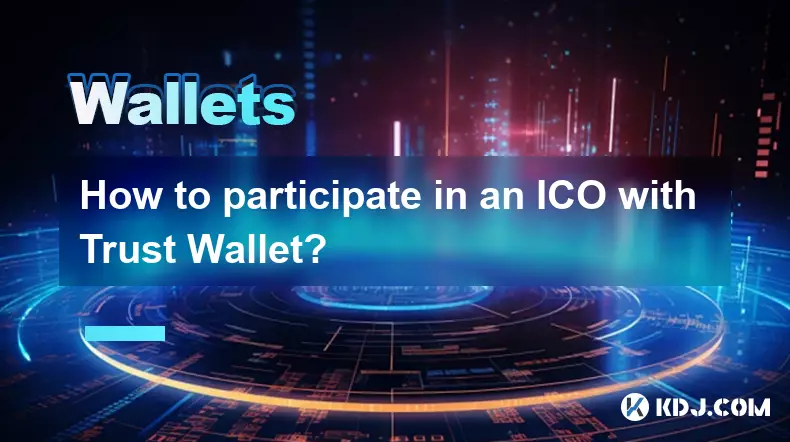
How to participate in an ICO with Trust Wallet?
Aug 30,2025 at 04:36pm
Understanding ICOs and Trust Wallet Compatibility1. Initial Coin Offerings (ICOs) are fundraising mechanisms used by blockchain projects to raise capi...
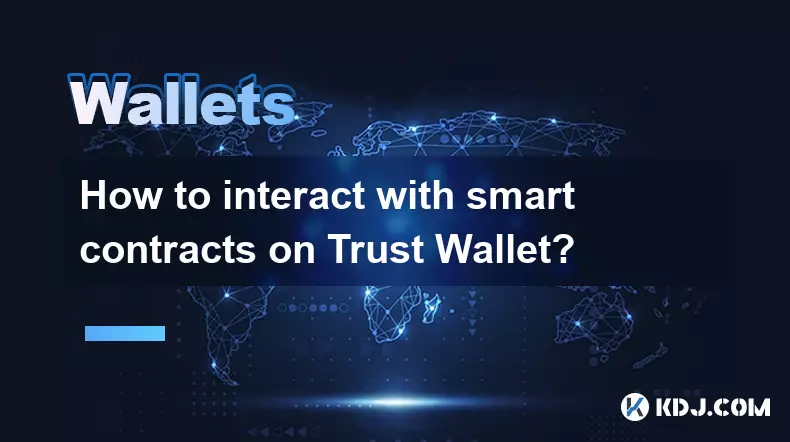
How to interact with smart contracts on Trust Wallet?
Aug 29,2025 at 01:28am
Understanding Smart Contracts and Trust Wallet Compatibility1. Smart contracts are self-executing agreements with the terms directly written into code...

How to use Trust Wallet's built-in DEX?
Aug 29,2025 at 07:28am
Understanding Trust Wallet’s Built-in DEX1. Trust Wallet integrates a decentralized exchange (DEX) directly within its mobile application, allowing us...

How to manage multiple wallets in Trust Wallet?
Aug 30,2025 at 04:45am
Understanding Wallet Management in Trust Wallet1. Trust Wallet supports a wide range of cryptocurrencies and tokens, allowing users to manage multiple...

How to avoid slippage when swapping on Trust Wallet?
Aug 29,2025 at 03:01am
Understanding Slippage in Decentralized Exchanges1. Slippage occurs when the price of a cryptocurrency changes between the time a transaction is initi...

How to buy altcoins on Trust Wallet?
Aug 29,2025 at 11:36pm
Understanding Trust Wallet and Altcoin Purchases1. Trust Wallet is a non-custodial cryptocurrency wallet that supports a wide range of altcoins and bl...

How to participate in an ICO with Trust Wallet?
Aug 30,2025 at 04:36pm
Understanding ICOs and Trust Wallet Compatibility1. Initial Coin Offerings (ICOs) are fundraising mechanisms used by blockchain projects to raise capi...

How to interact with smart contracts on Trust Wallet?
Aug 29,2025 at 01:28am
Understanding Smart Contracts and Trust Wallet Compatibility1. Smart contracts are self-executing agreements with the terms directly written into code...
See all articles





















